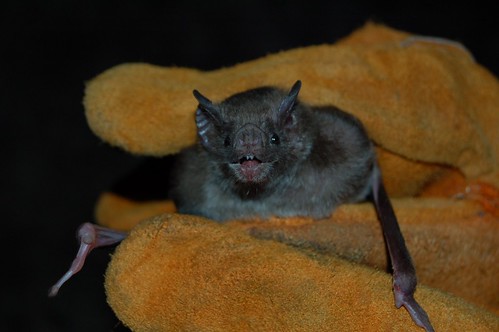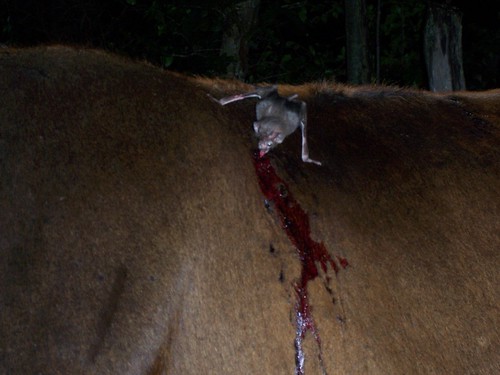
A vampire bat in Mexico. Photo by Luis Lecuna, USDA APHIS, International Services, Mexico.
All this month we will be taking a look at what a changing climate means to Agriculture. For APHIS, changes in environmental conditions will increase the likelihood of shifts in the distribution and nature of current domestic diseases, invasive species and agricultural pests. These changes will likely influence the dynamics of invasion and establishment of these diseases and pests, and therefore much of APHIS’ work. Understanding and adapting to these changes is therefore critical to meeting our mission.
Vampire bats rank high on the list of animals that scare us the most. Spooky Halloween tales of their blood-sucking, nocturnal, and secretive habits have likely led to their bad reputation. The fact that some also carry and spread the deadly rabies virus doesn’t help.
The common vampire bat feeds on the blood of Central and South American wildlife and livestock. They also sometimes bite and feed on the blood of people. Recently, vampire bats have been documented within 35 miles of the Texas border. This has caused concern and speculation about the potential movement of vampire bats to areas within the United States as a result of rising global temperatures. To gain a better understanding of the likelihood of such movement, USDA-APHIS geneticist Dr. Toni Piaggio with the Wildlife Services National Wildlife Research Center partnered with U.S. Geological Survey scientist Dr. Mark Hayes to analyze and map the potential distribution of vampire bats under various climate scenarios.
“Because there are relatively high numbers of cattle and other livestock in northeastern Mexico and southern Texas, wildlife managers and ranchers are concerned that vampire bats could survive in these areas and spread disease,” states Piaggio. “This could have serious economic impacts to livestock producers since vampire bat bites are known to weaken cattle, reduce milk production, cause secondary infections and sometimes death, especially if cattle contract rabies.”
Piaggio and Hayes used more than 7,000 reports of vampire bats in northern Mexico and five modeling approaches to map the potential distribution of the species along the Mexico-U.S. border through the year 2070. The models’ results were extrapolated to reflect future climate scenarios.

A vampire bat in Mexico. Photo by Luis Lecuna, USDA APHIS, International Services, Mexico.
Piaggio notes, “Our analysis suggests it is possible that vampire bats could expand their range into the U.S.— most likely into the southern tip of Texas and Florida. However, their range may be limited by winter temperatures.”
USDA is monitoring for evidence of vampires in extreme south Texas, especially in areas predicted to be suitable habitats for them to thrive in the current climate.
USDA and its partners continue to look for evidence of vampire bats in extreme south Texas.

A vampire bat feeds from a cow in Mexico. The cow later died of rabies. Photo by Luis Lecuna, USDA APHIS, International Services, Mexico.
No comments:
Post a Comment
Note: Only a member of this blog may post a comment.